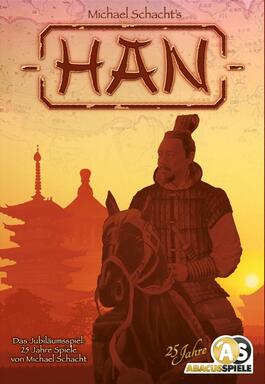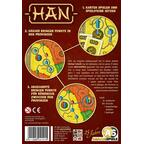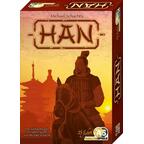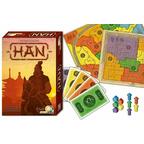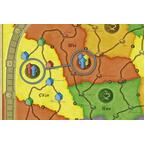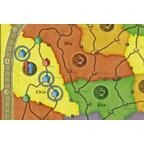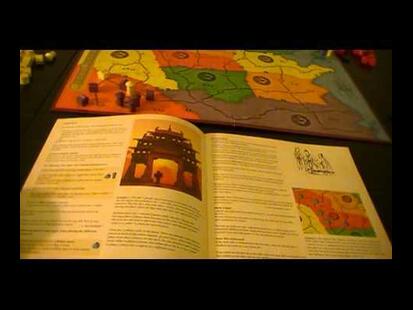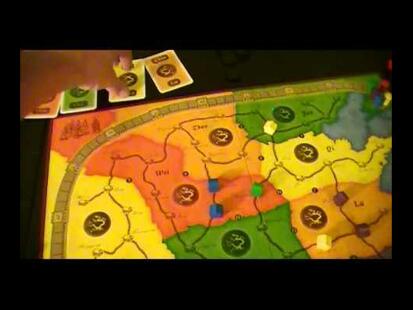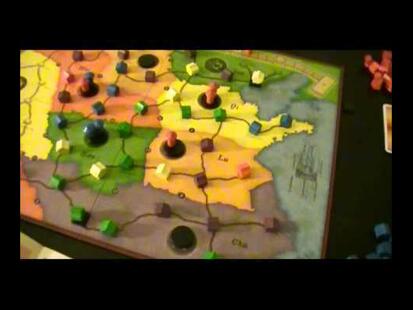Essentially, Han uses the same game principle as China, also designed by Michael Schacht, but the double-sided game board cards introduce new rules and variations. In general, players use cards to place pieces (houses or emissaries) in the nine regions of the board. To place a piece in a region, a player must play one card of the region's colour or two cards of the same colour and a joker. A player may place a maximum of two pieces in a region during a turn, but only one piece if the region was unoccupied at the beginning of the turn. One side of the game board - entitled "Grenzstreitigkeiten", or "Border Disputes", and designed for 3 to 5 players - includes house locations that overlap two regions; to claim one of these locations, a player must discard two cards of the appropriate colour. The number of emissaries in a region is limited to the number of houses of the same colour in that region.
When all house spaces in a region are filled (or at the end of the game), players score one point for that region. Whoever has the most houses in that region scores one point for each house in the region, whoever has the second most houses scores one point for each house of the player with the most houses, and so on.
At the end of the game, players also score points if they have a majority of emissaries in two adjacent regions, scoring as many points as the number of emissaries in the two regions. Players also score points if they have four or more houses in an unbroken sequence along one of the routes on the board. On the "Grenzstreitigkeiten" game board, players also score majority points for houses in port cities located in several regions, as these port cities effectively form their own region. The player who scores the most points wins.
Rule, Educational Sheet ... 2 Files Available2 Files Available
Download the rule for Han or any other documents (scenarios, goodies, pedagogical sheet, erratum, ...). 2 PDF files are available. See all available files
Contents of the box : 1 game board, 57 province cards, 100 houses, 45 emissaries, 1 emperor, 9 score discs, 5 variant markers, 5 score cards, 1 rule book.
